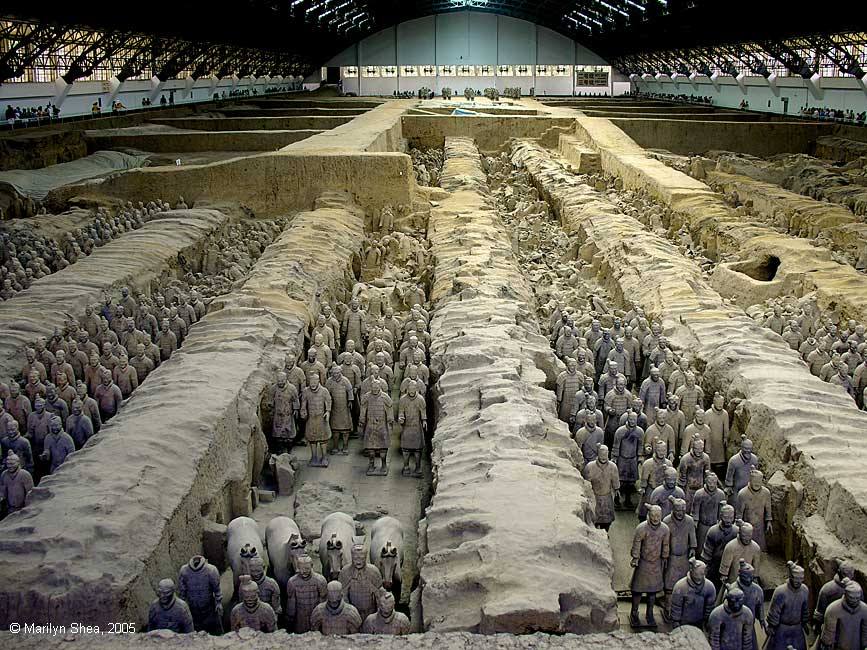 |
| In 1974, the fields were dry in Shaanxi and the old well had become brackish. Yang Zhifa, who lived in Qinyong Village in Xi'an, decided to dig a new, deeper well in the middle of a field. He got a bit of a surprise. As he dug, suddenly, at five meters down (16 feet), he saw the head of a man. A little more digging, and he was sure that what he had found was important. There must've been much discussion in the village about what to do, but finally he went to the curator of the history museum and archaeologists were called in and the history of Xi'an had yet another chapter to be written. This would be a chapter of rediscovering the past, while at the same time entering the modern age as one of the primary tourist destinations in the world.
As the archaeologists dug, it was quite clear that this find was more than a simple grave. This site became an international project with contributions made by many countries, especially Japan. In 1974, the resources necessary for a huge dig were not available. Nixon visited Mao Zedong in 1972, there would be a great earthquake in 1976 that would presage the changes coming for China, the Special Economic Zones would not be set up until the 1980s, and the tourist industry would not take off until the 1990s. Today, the Terracotta Warriors and Horses Museum is visited by over 3 million people from all over the world each year, but primarily from within China. For ordinary people in China, the improved economy has meant a chance to travel and to see the wonders of their own country. Before the 1970s, travel was restricted within China: you needed a permit to go beyond your own zone. Modern roads, fast trains, and local airports have made travel convenient and affordable. Archaeology has become big business. The economic impact on a village or a city that can attract tourists to an ancient historical or cultural site is tremendous. As achieving status as a "protected site" by the central government of China or by the United Nations through UNESCO brings development money, jobs, roads, and infrastructure, it eventually yields the money for better hospitals and schools. This status also brings with it the danger of exploitation, graft, corruption, and unchecked development. To guard against this, both the government of China and the United Nations lay down rules for development to protect the local culture and the local people. The guidelines don't always work the way they were intended, but they do temper the potential harm. |
http://hua.umf.maine.edu/China/xian2.html
Last
update: March 2010
© Marilyn Shea, 2010